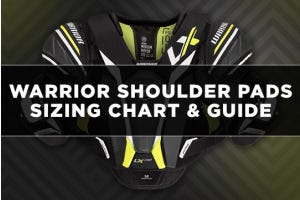Are Hockey Games Cold? A Comprehensive Temperature Guide

One of the most common questions for first-time hockey game attendees is, Are hockey games cold? The answer is yes, but the level of cold can vary depending on factors like the arena size, location, and where you’re sitting. This guide will help you understand what to expect at a hockey game and provide tips on how to stay warm and comfortable, so you can focus on enjoying the action on the ice.
In this article, we will cover:
How Cold Is It at a Hockey Game?
Hockey arenas are typically colder than most indoor venues to maintain the ice surface. On average, temperatures inside a hockey arena range from 50°F to 60°F (10°C to 15°C). However, if you are sitting close to the ice, it can feel cooler, particularly in the first few rows, where temperatures might drop to around 40°F (4°C).
The cooler environment inside hockey arenas is crucial for maintaining the ice, ensuring that it stays frozen and smooth for the players. The air temperature is kept low to prevent the ice from melting and becoming too soft, which can affect gameplay. While it can feel cold for spectators, temperature control is necessary for the integrity of the game.
Factors Affecting the Temperature Inside Hockey Arenas
- Seating Location: The closer you are to the ice, the colder it will feel.
- Arena Size: Larger arenas may have better temperature regulation, while smaller, community rinks can feel much colder.
- Outside Weather: In older arenas, external weather conditions can influence the inside temperature.
- Crowd Size: A full arena can warm up slightly from body heat, but it usually won’t make a significant difference near the ice.
How to Dress for a Hockey Game
To stay warm at a hockey game, it’s important to dress in layers. Here’s how you can layer up for comfort:
Base Layer: Wear a thermal or long-sleeve shirt to trap heat close to your body.
Mid Layer: A sweater or hoodie will add extra warmth.
Outer Layer: A medium-weight jacket or coat is recommended, especially if you're seated near the ice.
Accessories: Consider bringing a hat, gloves, and a scarf to help keep your extremities warm.
Footwear: Insulated boots or warm socks will keep your feet cozy on colder surfaces.
Exploring the Temperature Differences Between Arenas
Different hockey arenas manage temperatures in various ways, which can affect how cold it feels. Here’s a comparison of some well-known hockey arenas:
Area Name | Location | Average Temperature |
Bell Centre | Montreal, QC | 58°F (14°C) |
Rogers Place | Edmonton, AB | 55°F (13°C) |
| TD Garden | Boston, MA | 60°F (15°C) |
| Little Caesars Arena | Detroit, MI | 56°F (13°C) |
*Different venues have their own temperature control systems, and factors such as insulation, size, and outdoor climate can all play a role in how cold the arena feels during a game.
Staying Comfortable at Cold Hockey Games
If you're attending a hockey game, here are a few tips to help you stay comfortable despite the cold:
- Warm Beverages: Many arenas sell hot chocolate, coffee, or tea, which can help keep your hands and body warm.
- Blankets: Bring a small, packable blanket to cover your legs and lap if you’re seated close to the ice.
- Moving Around: Walking around the concourse during intermissions can help you warm up.
- Hand Warmers: Pocket-sized hand warmers are a great way to stay comfortable, especially in colder sections.
Frequently Asked Questions
- At what temperature is a hockey game canceled?
- Hockey games are typically not canceled due to indoor temperatures, as arenas are climate-controlled. Outdoor games, however, can be postponed or rescheduled if temperatures become dangerously cold for players or fans.
- Why do hockey arenas keep the temperature so low?
- The low temperature is essential for maintaining the quality of the ice, ensuring it remains hard and smooth for players.
- Can the temperature inside a hockey arena affect player performance?
- Yes, ice quality can impact a player’s performance. If the ice is too soft, it can slow down players and affect puck movement.
- Is the temperature colder near the ice than at higher seating?
- Yes, the closer you are to the ice, the colder it will feel, as cold air settles near the surface.
- What are the best accessories to bring to a hockey game for warmth?
- A hat, gloves, scarf, and possibly a small blanket are recommended to stay comfortable in colder seating areas.
- Do indoor arenas adjust temperatures based on the outdoor weather?
- While most indoor arenas maintain a consistent temperature, older arenas may be more influenced by outdoor weather, particularly in extreme conditions.









Login and Registration Form
or
Create an account